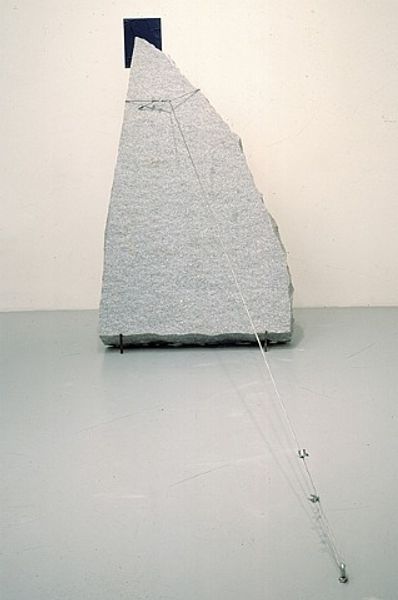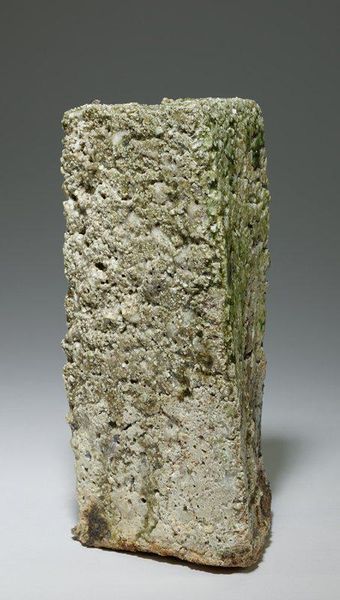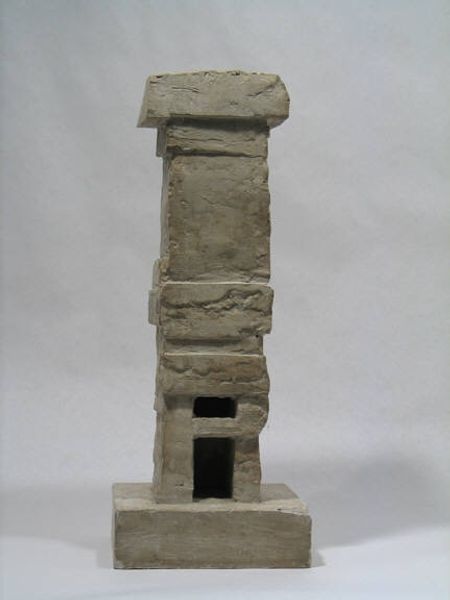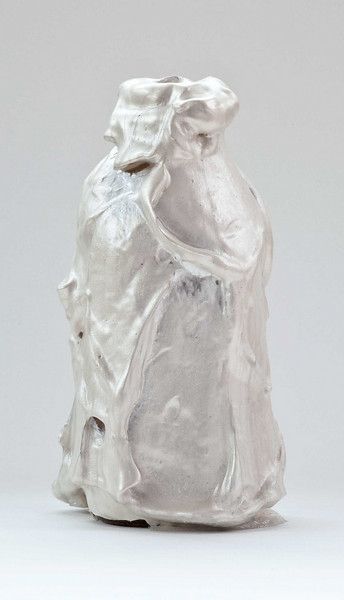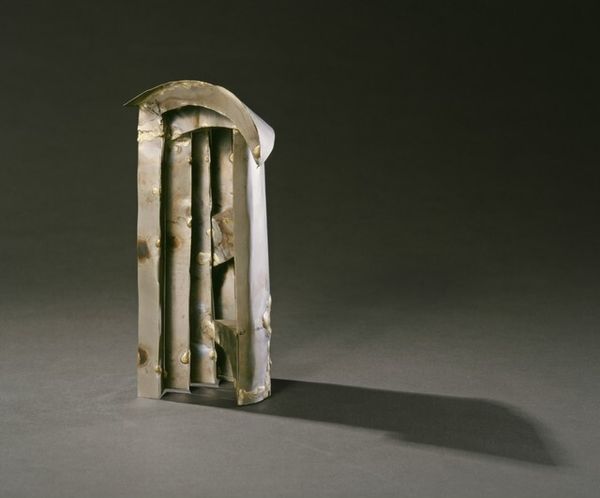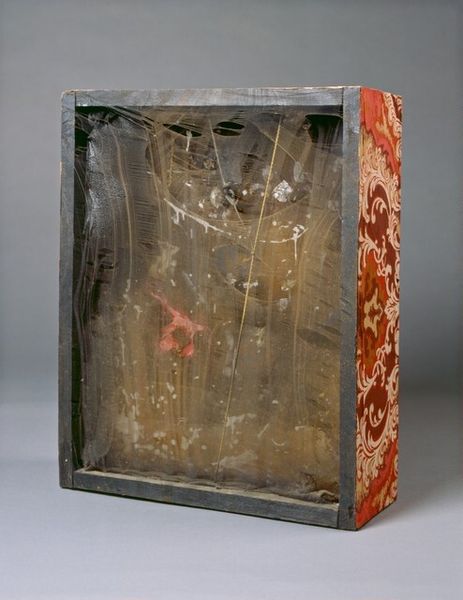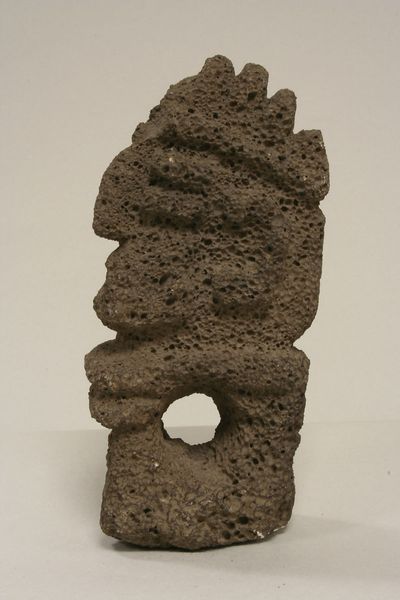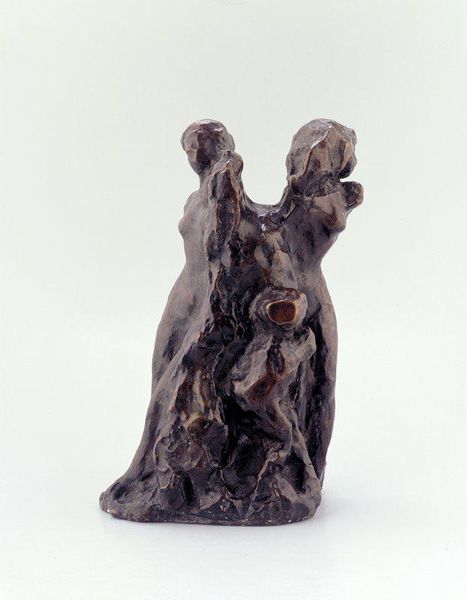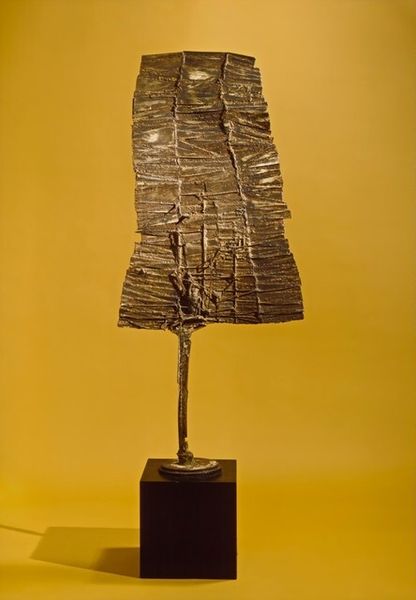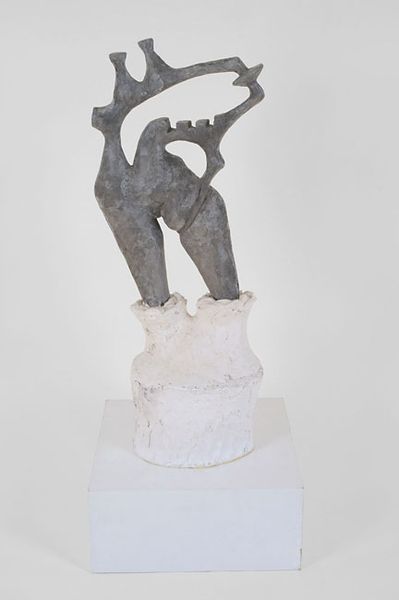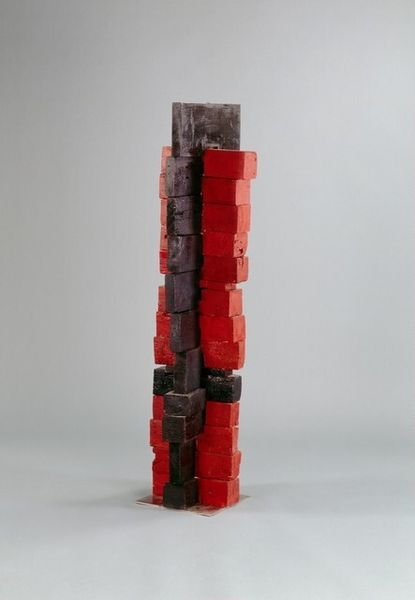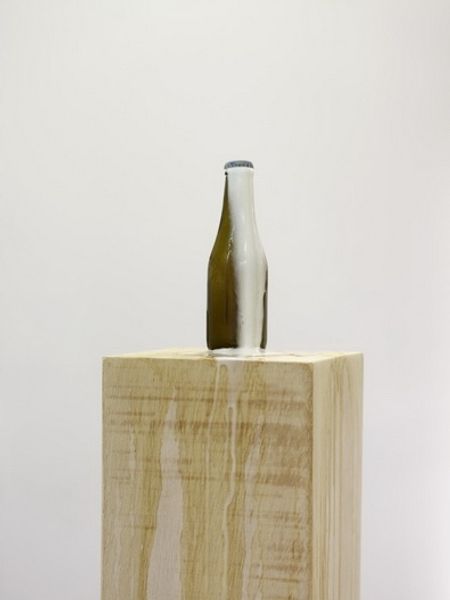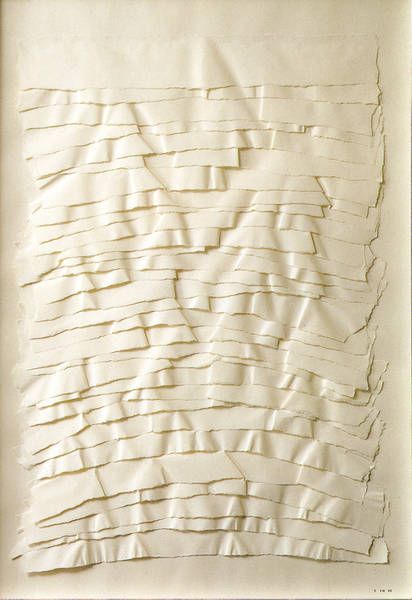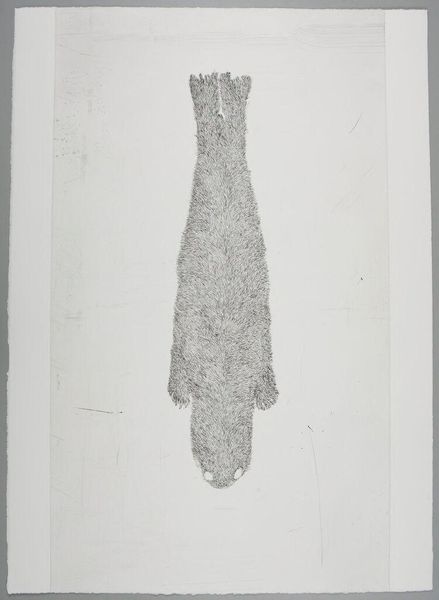
Copyright: Leiko Ikemura,Fair Use
Editor: This is Leiko Ikemura’s "Dreistöckiges Haus in Türkis" made in 1995 using ceramic and earthenware. The title translates to "Three-Story House in Turquoise," and it certainly has that towering form, though its subdued coloration almost mutes the imposing nature. How do you interpret this work purely from its structural elements? Curator: I’m immediately drawn to the triadic division of the piece, emphasized by those circumferential perforations. Consider the undulating surface; the turquoise glaze pools and recedes, articulating form while simultaneously disrupting its clarity. Editor: I see what you mean. The surface imperfections also seem crucial – the glaze isn’t smooth. It's very tactile, rough even. It gives an unfinished air, doesn’t it? Curator: Precisely! These surface textures are integral, playing against the implied geometric precision. Observe also the apertures interrupting the curvature. Are they purely decorative, or do they invite a dialogue between interior volume and exterior space? What is the syntax in negative and positive shapes, where the inner void merges and reemerges with the outside environs? Editor: It’s true, they’re like windows into another dimension… but a dimension still made of the same material as the outer walls. Do you think Ikemura deliberately employed this technique to destabilize form? Curator: Destabilization, perhaps, but also to activate. The fenestrations create a visual rhythm. Light plays a vital role, too; the light through these perforations further deconstructs the three forms into smaller parts. Editor: So the emphasis shifts from a static observation of an object to an evolving interaction influenced by external light and shifting perspective? Curator: Exactly! Our gaze is not fixed; it is participatory, ever-changing. Form, space, light, void…these are the tools through which Ikemura articulates a new plastic lexicon. Editor: Thank you. Looking closely has shifted my perspective. The sculpture appears more than just an object now—it's an unfolding visual process. Curator: Indeed, the strength of this work resides precisely in its ability to challenge and revise our apprehension of visuality.
Comments
No comments
Be the first to comment and join the conversation on the ultimate creative platform.
